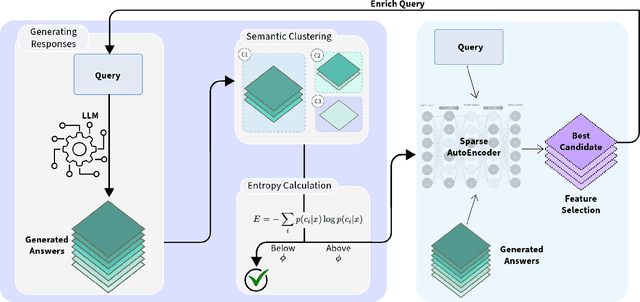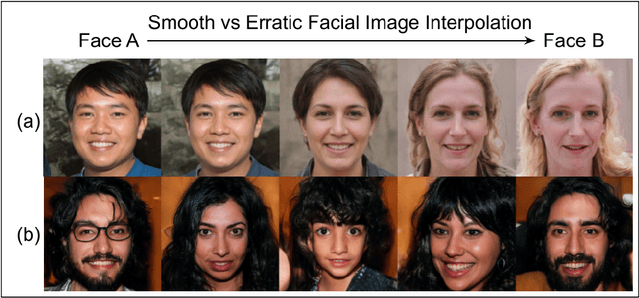Erchin Serpedin
Evaluating Multilingual and Code-Switched Alignment in LLMs via Synthetic Natural Language Inference
Aug 20, 2025Abstract:Large language models (LLMs) are increasingly applied in multilingual contexts, yet their capacity for consistent, logically grounded alignment across languages remains underexplored. We present a controlled evaluation framework for multilingual natural language inference (NLI) that generates synthetic, logic-based premise-hypothesis pairs and translates them into a typologically diverse set of languages. This design enables precise control over semantic relations and allows testing in both monolingual and mixed-language (code-switched) conditions. Surprisingly, code-switching does not degrade, and can even improve, performance, suggesting that translation-induced lexical variation may serve as a regularization signal. We validate semantic preservation through embedding-based similarity analyses and cross-lingual alignment visualizations, confirming the fidelity of translated pairs. Our findings expose both the potential and the brittleness of current LLM cross-lingual reasoning, and identify code-switching as a promising lever for improving multilingual robustness. Code available at: https://github.com/KurbanIntelligenceLab/nli-stress-testing
EMPATHIA: Multi-Faceted Human-AI Collaboration for Refugee Integration
Aug 11, 2025Abstract:Current AI approaches to refugee integration optimize narrow objectives such as employment and fail to capture the cultural, emotional, and ethical dimensions critical for long-term success. We introduce EMPATHIA (Enriched Multimodal Pathways for Agentic Thinking in Humanitarian Immigrant Assistance), a multi-agent framework addressing the central Creative AI question: how do we preserve human dignity when machines participate in life-altering decisions? Grounded in Kegan's Constructive Developmental Theory, EMPATHIA decomposes integration into three modules: SEED (Socio-cultural Entry and Embedding Decision) for initial placement, RISE (Rapid Integration and Self-sufficiency Engine) for early independence, and THRIVE (Transcultural Harmony and Resilience through Integrated Values and Engagement) for sustained outcomes. SEED employs a selector-validator architecture with three specialized agents - emotional, cultural, and ethical - that deliberate transparently to produce interpretable recommendations. Experiments on the UN Kakuma dataset (15,026 individuals, 7,960 eligible adults 15+ per ILO/UNHCR standards) and implementation on 6,359 working-age refugees (15+) with 150+ socioeconomic variables achieved 87.4% validation convergence and explainable assessments across five host countries. EMPATHIA's weighted integration of cultural, emotional, and ethical factors balances competing value systems while supporting practitioner-AI collaboration. By augmenting rather than replacing human expertise, EMPATHIA provides a generalizable framework for AI-driven allocation tasks where multiple values must be reconciled.
Stress-Testing Multimodal Foundation Models for Crystallographic Reasoning
Jun 16, 2025Abstract:Evaluating foundation models for crystallographic reasoning requires benchmarks that isolate generalization behavior while enforcing physical constraints. This work introduces a multiscale multicrystal dataset with two physically grounded evaluation protocols to stress-test multimodal generative models. The Spatial-Exclusion benchmark withholds all supercells of a given radius from a diverse dataset, enabling controlled assessments of spatial interpolation and extrapolation. The Compositional-Exclusion benchmark omits all samples of a specific chemical composition, probing generalization across stoichiometries. Nine vision--language foundation models are prompted with crystallographic images and textual context to generate structural annotations. Responses are evaluated via (i) relative errors in lattice parameters and density, (ii) a physics-consistency index penalizing volumetric violations, and (iii) a hallucination score capturing geometric outliers and invalid space-group predictions. These benchmarks establish a reproducible, physically informed framework for assessing generalization, consistency, and reliability in large-scale multimodal models. Dataset and code are available at https://github.com/KurbanIntelligenceLab/StressTestingMMFMinCR.
Theorem-of-Thought: A Multi-Agent Framework for Abductive, Deductive, and Inductive Reasoning in Language Models
Jun 08, 2025Abstract:Large language models (LLMs) have shown strong performance across natural language reasoning tasks, yet their reasoning processes remain brittle and difficult to interpret. Prompting techniques like Chain-of-Thought (CoT) enhance reliability by eliciting intermediate reasoning steps or aggregating multiple outputs. However, they lack mechanisms for enforcing logical structure and assessing internal coherence. We introduce Theorem-of-Thought (ToTh), a novel framework that models reasoning as collaboration among three parallel agents, each simulating a distinct mode of inference: abductive, deductive, and inductive. Each agent produces a reasoning trace, which is structured into a formal reasoning graph. To evaluate consistency, we apply Bayesian belief propagation guided by natural language inference (NLI), assigning confidence scores to each step. The most coherent graph is selected to derive the final answer. Experiments on symbolic (WebOfLies) and numerical (MultiArith) reasoning benchmarks show that ToTh consistently outperforms CoT, Self-Consistency, and CoT-Decoding across multiple LLMs, while producing interpretable and logically grounded reasoning chains. Our findings suggest a promising direction for building more robust and cognitively inspired LLM reasoning. The implementation is available at https://github.com/KurbanIntelligenceLab/theorem-of-thought.
Understanding the Capabilities of Molecular Graph Neural Networks in Materials Science Through Multimodal Learning and Physical Context Encoding
May 17, 2025Abstract:Molecular graph neural networks (GNNs) often focus exclusively on XYZ-based geometric representations and thus overlook valuable chemical context available in public databases like PubChem. This work introduces a multimodal framework that integrates textual descriptors, such as IUPAC names, molecular formulas, physicochemical properties, and synonyms, alongside molecular graphs. A gated fusion mechanism balances geometric and textual features, allowing models to exploit complementary information. Experiments on benchmark datasets indicate that adding textual data yields notable improvements for certain electronic properties, while gains remain limited for others. Furthermore, the GNN architectures display similar performance patterns (improving and deteriorating on analogous targets), suggesting they learn comparable representations rather than distinctly different physical insights.
HalluVerse25: Fine-grained Multilingual Benchmark Dataset for LLM Hallucinations
Mar 10, 2025



Abstract:Large Language Models (LLMs) are increasingly used in various contexts, yet remain prone to generating non-factual content, commonly referred to as "hallucinations". The literature categorizes hallucinations into several types, including entity-level, relation-level, and sentence-level hallucinations. However, existing hallucination datasets often fail to capture fine-grained hallucinations in multilingual settings. In this work, we introduce HalluVerse25, a multilingual LLM hallucination dataset that categorizes fine-grained hallucinations in English, Arabic, and Turkish. Our dataset construction pipeline uses an LLM to inject hallucinations into factual biographical sentences, followed by a rigorous human annotation process to ensure data quality. We evaluate several LLMs on HalluVerse25, providing valuable insights into how proprietary models perform in detecting LLM-generated hallucinations across different contexts.
SINdex: Semantic INconsistency Index for Hallucination Detection in LLMs
Mar 07, 2025Abstract:Large language models (LLMs) are increasingly deployed across diverse domains, yet they are prone to generating factually incorrect outputs - commonly known as "hallucinations." Among existing mitigation strategies, uncertainty-based methods are particularly attractive due to their ease of implementation, independence from external data, and compatibility with standard LLMs. In this work, we introduce a novel and scalable uncertainty-based semantic clustering framework for automated hallucination detection. Our approach leverages sentence embeddings and hierarchical clustering alongside a newly proposed inconsistency measure, SINdex, to yield more homogeneous clusters and more accurate detection of hallucination phenomena across various LLMs. Evaluations on prominent open- and closed-book QA datasets demonstrate that our method achieves AUROC improvements of up to 9.3% over state-of-the-art techniques. Extensive ablation studies further validate the effectiveness of each component in our framework.
SAFE: A Sparse Autoencoder-Based Framework for Robust Query Enrichment and Hallucination Mitigation in LLMs
Mar 04, 2025



Abstract:Despite the state-of-the-art performance of Large Language Models (LLMs), these models often suffer from hallucinations, which can undermine their performance in critical applications. In this work, we propose SAFE, a novel method for detecting and mitigating hallucinations by leveraging Sparse Autoencoders (SAEs). While hallucination detection techniques and SAEs have been explored independently, their synergistic application in a comprehensive system, particularly for hallucination-aware query enrichment, has not been fully investigated. To validate the effectiveness of SAFE, we evaluate it on two models with available SAEs across three diverse cross-domain datasets designed to assess hallucination problems. Empirical results demonstrate that SAFE consistently improves query generation accuracy and mitigates hallucinations across all datasets, achieving accuracy improvements of up to 29.45%.
CleftGAN: Adapting A Style-Based Generative Adversarial Network To Create Images Depicting Cleft Lip Deformity
Oct 12, 2023



Abstract:A major obstacle when attempting to train a machine learning system to evaluate facial clefts is the scarcity of large datasets of high-quality, ethics board-approved patient images. In response, we have built a deep learning-based cleft lip generator designed to produce an almost unlimited number of artificial images exhibiting high-fidelity facsimiles of cleft lip with wide variation. We undertook a transfer learning protocol testing different versions of StyleGAN-ADA (a generative adversarial network image generator incorporating adaptive data augmentation (ADA)) as the base model. Training images depicting a variety of cleft deformities were pre-processed to adjust for rotation, scaling, color adjustment and background blurring. The ADA modification of the primary algorithm permitted construction of our new generative model while requiring input of a relatively small number of training images. Adversarial training was carried out using 514 unique frontal photographs of cleft-affected faces to adapt a pre-trained model based on 70,000 normal faces. The Frechet Inception Distance (FID) was used to measure the similarity of the newly generated facial images to the cleft training dataset, while Perceptual Path Length (PPL) and the novel Divergence Index of Severity Histograms (DISH) measures were also used to assess the performance of the image generator that we dub CleftGAN. We found that StyleGAN3 with translation invariance (StyleGAN3-t) performed optimally as a base model. Generated images achieved a low FID reflecting a close similarity to our training input dataset of genuine cleft images. Low PPL and DISH measures reflected a smooth and semantically valid interpolation of images through the transfer learning process and a similar distribution of severity in the training and generated images, respectively.
Federated Learning Based Distributed Localization of False Data Injection Attacks on Smart Grids
Jun 17, 2023



Abstract:Data analysis and monitoring on smart grids are jeopardized by attacks on cyber-physical systems. False data injection attack (FDIA) is one of the classes of those attacks that target the smart measurement devices by injecting malicious data. The employment of machine learning techniques in the detection and localization of FDIA is proven to provide effective results. Training of such models requires centralized processing of sensitive user data that may not be plausible in a practical scenario. By employing federated learning for the detection of FDIA attacks, it is possible to train a model for the detection and localization of the attacks while preserving the privacy of sensitive user data. However, federated learning introduces new problems such as the personalization of the detectors in each node. In this paper, we propose a federated learning-based scheme combined with a hybrid deep neural network architecture that exploits the local correlations between the connected power buses by employing graph neural networks as well as the temporal patterns in the data by using LSTM layers. The proposed mechanism offers flexible and efficient training of an FDIA detector in a distributed setup while preserving the privacy of the clients. We validate the proposed architecture by extensive simulations on the IEEE 57, 118, and 300 bus systems and real electricity load data.
 Add to Chrome
Add to Chrome Add to Firefox
Add to Firefox Add to Edge
Add to Edge